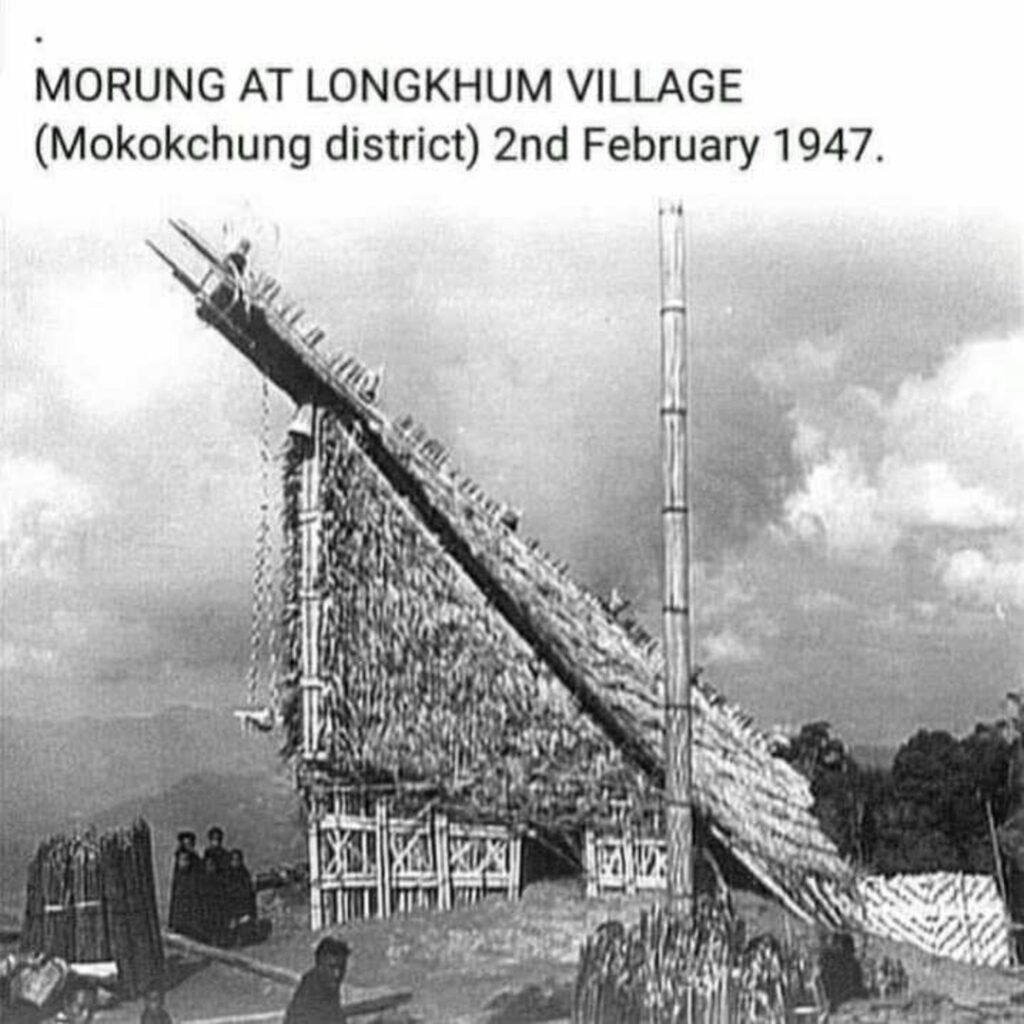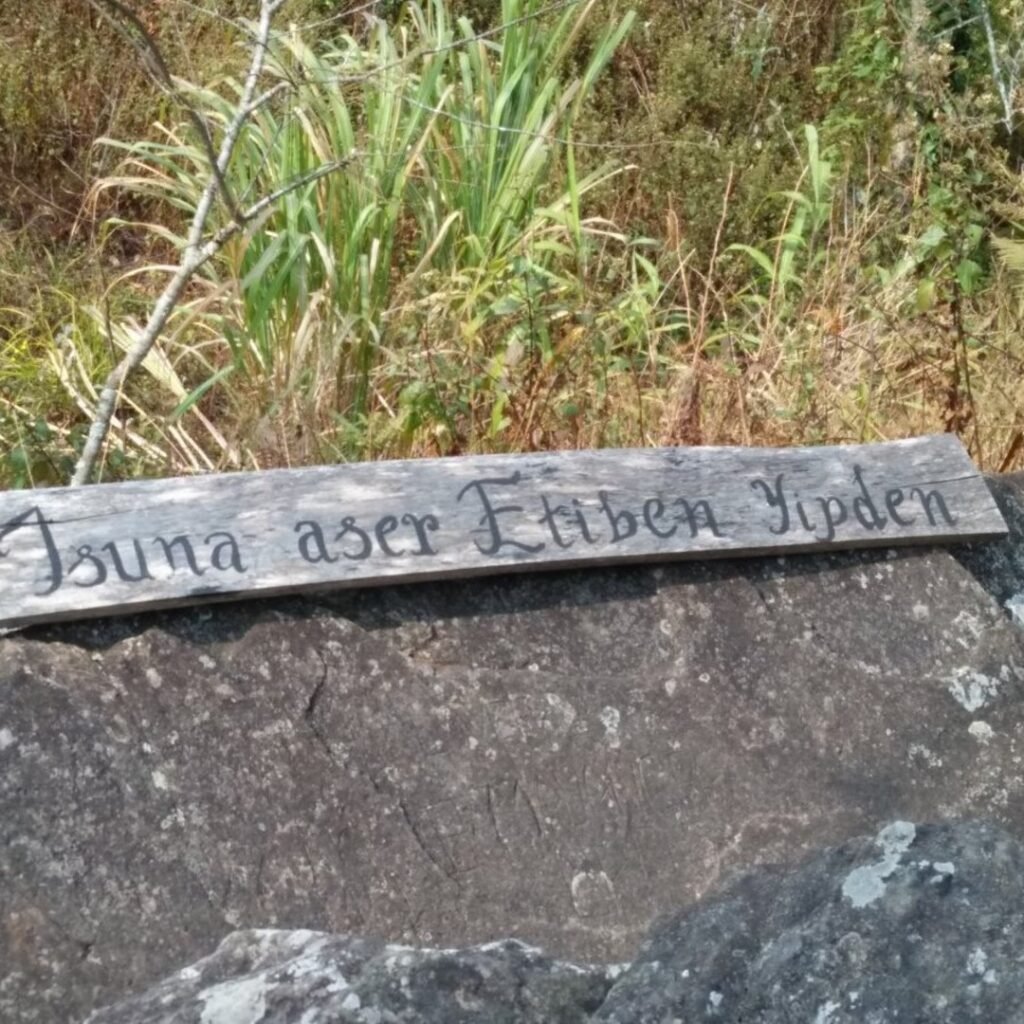Greetings, esteemed readers, permit me to regale you with a tale of enchantment and wonder, where the threads of nature, culture, and ancient spirits intertwine in a graceful dance. Prepare, dear companions, to embark upon a journey of discovery to none other than Longkhum, a precious gem nestled in the heart of Nagaland’s Mokokchung district. With utmost delight, I bid you join me on this captivating odyssey, as we unravel the secrets of Longkhum, a place where each step leads us closer to the very essence of existence.
Behold, my dear interlocutors, Longkhum Village emerges as the protagonist of our tale—a name derived from the Ao dialect, signifying “Stone.” This quaint abode is graciously hosted by the Ao Tribe of Nagaland, known far and wide for its generous spirits and warm hospitality. A mere stone’s throw from Mokokchung Town, Longkhum’s allure transcends geographical boundaries, for the journey to this tranquil haven is akin to a visual sonnet. One finds oneself embraced by lush emerald forests, their verdant arms reaching out to welcome travelers into a realm of pure serenity.

Yet, Longkhum Village stands not only as a picturesque haven but as a living testament to the tapestry of beliefs and stories woven into its very being. The ancient wisdom of the Ao Tribe imparts a sacred purpose to Longkhum—a sanctuary where the spirits of the departed find respite before embarking on their celestial voyage. A spiritual aura, as delicate as gossamer, envelops the village, forging an ethereal bridge between the realms of the living and the beyond—an eternal bond, much like the timeless land itself.
Intriguingly, dear readers, Longkhum’s spiritual landscape is further enriched by the presence of majestic eagles that grace the boundless skies above. These noble creatures, whose nests have graced the region for generations, are regarded not as mere avian beings, but as vessels of the very spirits they embody. The heavens above Longkhum transform into a hallowed tapestry, where life and the afterlife converge, and these eagles take flight with a grace that mirrors the land’s very soul.
Yet, let us not be content with mere tales of the spirit, for Longkhum unfolds a natural symphony that delights the senses and captures the heart. Picture, if you will, the sprawling valleys adorned with a kaleidoscope of wildflowers that dance to the rhythms of the wind. The forests, my dear friends, are more than mere arboreal arrangements; they are intricate ecosystems where life thrives in harmonious coexistence.
A pinnacle of this wondrous landscape is Mongzu Ki, fondly referred to as the “Eagle’s Abode.” Herein lies a silent narrative of spirits taking flight—a legacy passed down through generations. Eagles, these revered sentinels, have chosen this sacred haven as their abode, according to Ao Mythology. They are believed to embody the very essence of departed souls, their nests serving as celestial vessels that ferry spirits to the realms above. This ethereal connection paints an already stunning vista with strokes of the extraordinary.
Beyond the canvas of nature, Longkhum unfolds a rich cultural tapestry that beckons to be unfurled. The Ao Tribe extends a warm embrace, inviting travelers to immerse themselves in the cadence of traditions, the hues of rhythms, and the flavors of life. Naga textiles, my dear compatriots, stand as vibrant odes to heritage and artistry, each thread woven with tales of the land and its people.
But ah! Longkhum’s story stretches beyond its cultural embrace, etching its narratives in stone. A tale, timeless and enduring, resonates within the enigmatic rock formation that bears a footprint—an enigma believed to belong to Jina and Etiben, the Romeo and Juliet of the Ao Tribe. This natural monument stands as a monument to love’s enduring flame, etched in stone and whispered through generations.

And so, my esteemed companions, be prepared to be ensnared by an array of enchanting sites that bespeak Longkhum’s rich history and deep spirituality:
-
- The Imkongmeren Memorial Site: A tribute to a valiant Naga freedom fighter, offering panoramic vistas of the Doyang River and a blend of history and natural splendor.
-
- Longlangba – The Stone Bridge: Traverse a stone pathway etched with tales of love and battles, the carved hollows bearing witness to times long past.
-
- Retu Long – The Living Stone: Venture into a realm of myth and mystery, where a revered living stone guards secrets passed through the ages.
-
- Fosen Ki – Rock Caves: For the intrepid explorer, Fosen Ki awaits—a labyrinth of rock caves that murmurs ancient riddles, longing to be unraveled.
-
- Observatory Majang: A marvel of human ingenuity, offering a panoramic glimpse of the world below, where nature’s majesty and human art converge.
-
- Tsumeya Tsuin – Majestic Waterfall: Embark on a quest to unveil the awe-inspiring Tsumeya Tsuin, a waterfall that transcends the confines of mere photography.
-
- Tenem Temba Kong – The Heights of Exploration: Ascend vertical cliffs to reach the nest of the Hornbill Birds, where adventure meets the beauty of nature.
-
- Tangyim Marok – Healing Springs: Legend whispers of Tangyim Marok’s waters, believed to possess rejuvenating properties, offering solace to weary souls.
-
- Longkhum Cherry Blossoms: Witness nature’s ephemeral masterpiece as cherry blossoms grace Longkhum’s path with delicate beauty during September and October.
-
- Pine Grooves – Echoes of the Past: Planted during the British Era, the Pine Grooves stand as silent witnesses to history, extending an invitation to capture their timeless allure.
But, lo and behold, our sojourn is not complete without indulging in Longkhum’s culinary treasures. Embark on a gastronomic adventure, dear friends, as you savor the finest Rice Beers, like Mejemtsu—a nectar that encapsulates the very spirit of the land. Partake in Mokok-Rangdang, the Sticky-Rice Balls, and relish Mersu-Un, the flavorful Chilly Curry, each dish a delectable ode to culture and tradition.
And now, dear kindred spirits, our Longkhum expedition concludes, leaving an indelible mark upon our hearts and souls. As you traverse diverse landscapes, forge connections with spirited souls, and etch memories into the tapestry of your existence, you shall carry forth a symphony—an echo of soaring eagles, rustling leaves, and ageless tales harmonizing in a grand crescendo of nature, culture, and spirits. Embrace this Longkhum odyssey, dear friends, with hearts aglow and arms wide open, for in this dance of discovery, we find a symphony that shall forever resonate.




